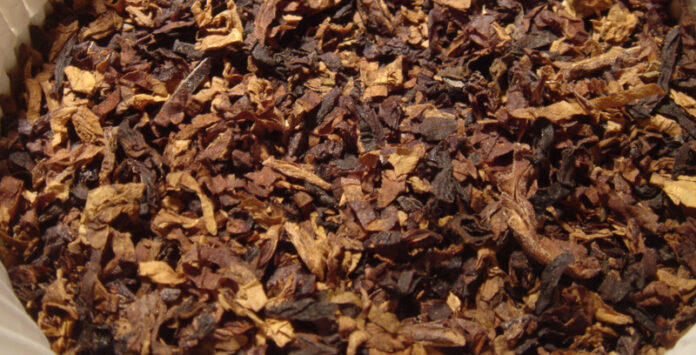Over 2,000 tobacco marketing instances observed in the first quarter, Vital Strategies reports
New Delhi, 12 December 2022: Despite gains in reducing tobacco use in India, approximately 29% of the adult (15+) population still uses tobacco. India has strong policies restricting tobacco advertising promotion and sponsorship, yet ‘surrogate marketing’ has been known to be used on traditional media channels to indirectly promote tobacco products. This form of advertising promotes unregulated products, such as pan masala, using the same or a similar brand identity as the tobacco product so that the consumer associates them. Global public health organization Vital Strategies today released its latest report “Hidden in Plain Sight: Surrogate Marketing of Tobacco Products on Social Media in India,” which offers a first look at surrogate marketing on social media platforms. The report captured and analyzed more than 2,000 posts collected between January and May 2022 that indirectly promote tobacco—12% of which was surrogate marketing. These findings highlight how social media users are being exposed to misleading marketing associated with tobacco companies and brands.
Dr. Nandita Murukutla, Vice President, Global Policy and Research at Vital Strategies said, “There is definitive evidence that exposure to tobacco marketing increases use, especially for kids and youth. Our latest TERM report finds that tobacco products are being advertised surreptitiously online via popular social media channels. Hidden forms of tobacco marketing undercut the effectiveness of existing tobacco control measures and put consumers, particularly youth, most at risk. It is crucial that public health-led efforts to curb online tobacco marketing be prioritized.”
Dr. Rana J. Singh, Deputy Regional Director – Tobacco Control at The International Union Against Tuberculosis and Lung Disease (The Union) said, “The Union commends Vital Strategies for this first-of-its-kind report that that helps us to better understand this landscape and identify these emerging challenges to meeting our tobacco control goals. We must address online surrogate marketing so that offline enforcement is more effective. Marketing is one of the key ways by which tobacco consumption is promoted and sustained. While we have strong bans on tobacco advertising promotion and sponsorship, surreptitious forms of tobacco marketing, including surrogate tobacco marketing, are known to still reach consumers. This data continues to support our efforts, many of our partners, and state governments in strengthening and enforcing tobacco control measures in India, while simultaneously providing policy makers and implementers with evidence-based proof of tobacco advertising and marketing. Such evidence will lend credibility to tobacco control programs, which can subsequently enable policy action.”
From January to May 2022, the following key findings were observed:
- The study states that out of 2,111 instances of online tobacco marketing, more than 90% were for tobacco companies’ allied products including surrogate products and brand-extended products (non-tobacco products that use the established brand name or trademark of a tobacco company, but do not have the same visual identity as the company’s tobacco products.)
- Of the 2,111 instance of online tobacco marketing, there were 243 instances of online surrogate marketing (12%) and 1,691 instances of company brand extension marketing (80%). The other 8% was direct marketing of tobacco products, where products were clearly pictured and not disguised.
- All surrogate marketing promoted mouth fresheners and pan masala products with the same visual brand identity as smokeless tobacco products (100%).
- Most surrogate products (98%) were marketed directly, with clear product pictures and the tobacco company’s logo.
- Nearly half of the observed online surrogate marketing leveraged cultural festivities and celebrations such as Republic Day and Chaitra Navratri; and featured famous Bollywood actors including Hrithik Roshan, Tiger Shroff and Mahesh Babu.
- Three-fourths (75%) of the online surrogate marketing was observed on Meta platforms (Facebook and Instagram).
In June 2022, the Central Consumer Protection Authority released the “Guidelines for Prevention of Misleading Advertisements and Endorsements for Misleading Advertisements, 2022,” which prohibit surrogate advertising and other advertising that makes unsubstantiated claims, exaggerated promises, offers misinformation or false claims. These findings call attention to the extent and nature of this type of marketing on social media.
Vaishakhi Mallik, Associate Director, South Asia, Policy Advocacy and Communication division at Vital Strategies India said, “With the rise of social media and digital marketing, India’s youth have worryingly become a more easily reachable market for the tobacco industry. Tobacco kills up to half of those who use it regularly, which makes it an urgent public health issue to keep any type of tobacco marketing, indirect or direct, away from the public eye. These findings highlight the need to strongly enforce the Central Consumer Protection Authority’s recently released guidelines to prevent misleading advertisements, including surrogate advertising.”
TERM is a low-cost, systematic and sustainable model for monitoring online marketing by the tobacco industry. It provides actionable evidence to government partners and civil society stakeholders to help curb online marketing of dangerous products and can be used to counter efforts by the industry to hook new generations to tobacco and nicotine addiction. TERM will continue to produce reports providing evidence of online tobacco marketing in several nations, including India, Indonesia and Mexico, with a high burden of tobacco consumption. These technical resources will support efforts to strengthen advertising bans to align with Article 13 of the World Health Organization’s Framework Convention on Tobacco Control and to respond to the emerging challenges to implementation posed by digital media.
The report data is based on publicly available posts shared to social media, which were identified using keyword-based queries and through the regular monitoring of social media accounts identified purposively via input from tobacco control experts, market research data. To access the report, please visit: https://termcommunity.com/publication/67/hidden-in-plain-sight-surrogate-marketing-of-tobacco-products-on-social-media-in-india

